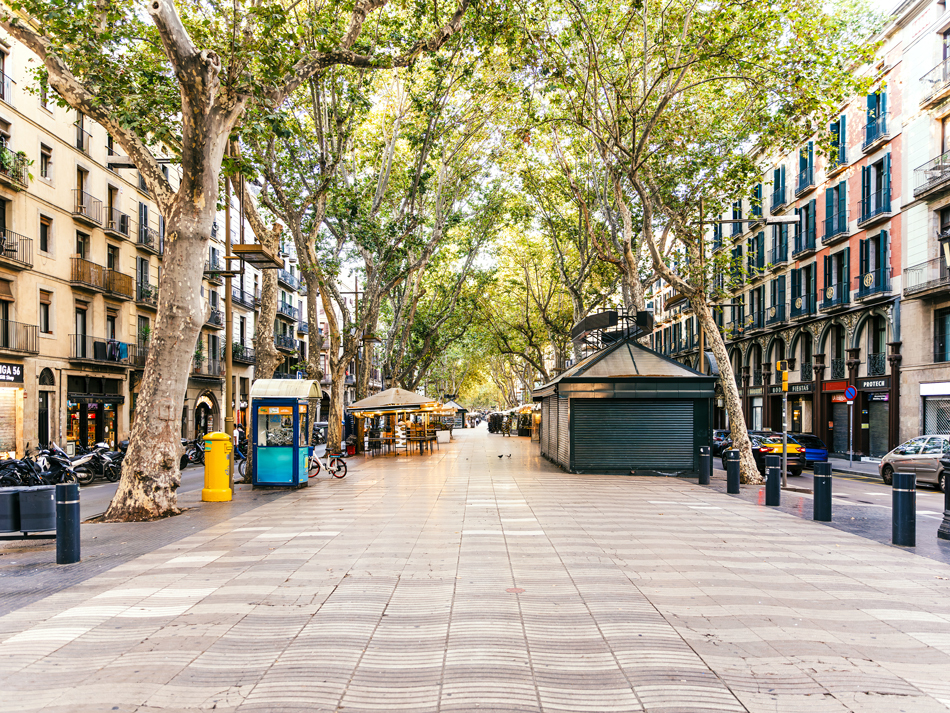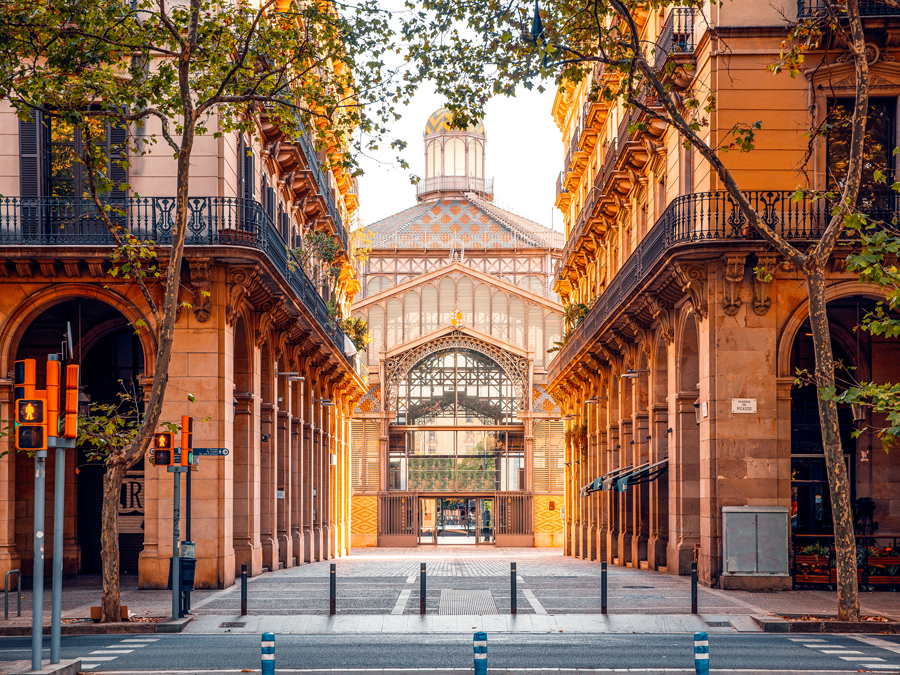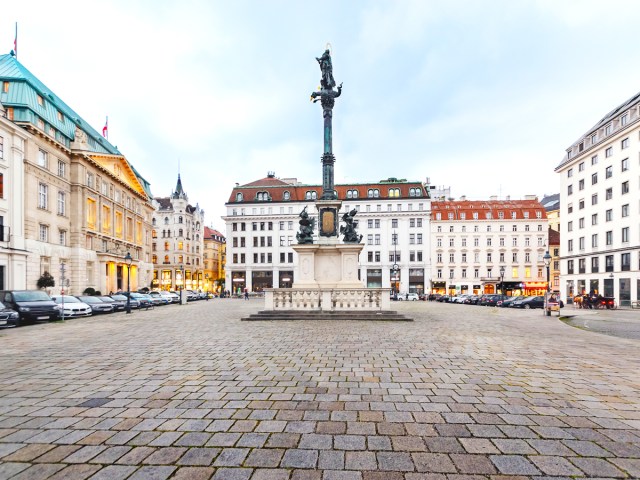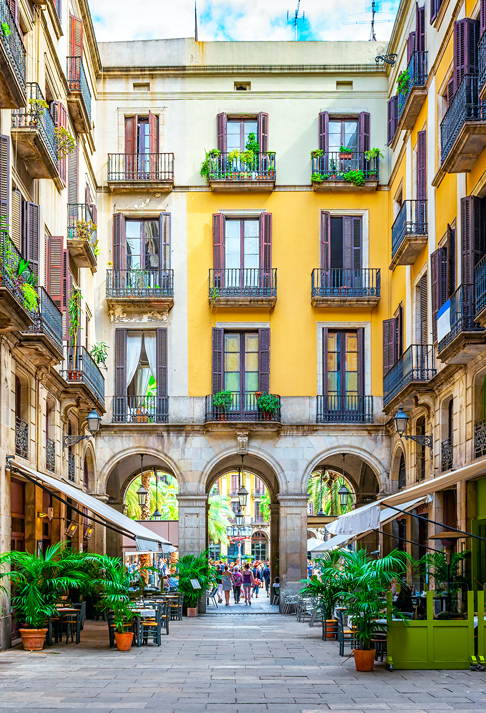Urban planning can be an immense challenge, especially when it comes to updating major cities with decades-old layouts. It’s often nearly impossible to repurpose gridlocked streets into a space that works better for local residents, and it definitely requires some out-of-the-box thinking to pull it off. One clever concept that has taken root in recent years is the “superblock.” Superblocks reimagine extant city blocks and transform them into highly desirable public spaces that can be enjoyed by the entire community. While there are slightly different variations when it comes to superblocks, there’s one city in particular that’s setting the trend. Below, find out all about superblocks and how you can visit one on your next trip.
What Is a Superblock?

A superblock takes a portion of a neighborhood that already exists and is overwhelmed by car traffic at the expense of those who live there. The neighborhood is completely reformatted in an effort to cut down on traffic or eliminate it entirely. To accomplish this, many streets are converted into public areas full of parks, benches, and other utilities for use by members of the community. The goal of superblocks is to encourage more pedestrian and bike traffic, plus additional interaction between neighbors, while also improving air quality and eliminating unwanted noise.
The Superilles of Barcelona, Spain

In the mid-1980s, Salvador Rueda — the head of Barcelona’s Urban Ecology Agency — was tasked with figuring out a way to lessen noise levels throughout the city. Rueda quickly determined that increased noise levels were due to everyday traffic, and that it was impossible to achieve lower decibel levels unless cars were either partially or fully eradicated. He realized that the solution to a more pleasant life was creating car-free neighborhoods, and thus the concept of superblocks (superilles in the local Catalan language) was born.
Rueda’s new vision took advantage of Barcelona’s unique grid pattern, which was created in the 1850s by architect Iledons Cerdá to deal with overcrowding. Essentially, Cerdá’s plan extended the footprint of the city back then with a new neighborhood called Eixample (Catalan for “extension”), which incorporated a series of equally-sized square blocks with interconnecting streets weaving throughout.
In the 1980s, Rueda’s plan was to take a three-block-by-three-block span of that grid and transform it into a massive singular superblock that was to be roughly 1,300 feet long by 1,300 feet wide. The idea was also to limit automobile traffic to just local residents, eliminating through traffic entirely. Rueda also envisioned converting the once car-lined streets into massive and serene greenspaces full of shared parks, picnic tables, and bike paths.
The First Superblocks

In 1993, Rueda’s vision finally took shape, and the first superblock was created in Barcelona’s El Born neighborhood. Prior to its creation, El Born was known for high crime rates and a lack of adequate infrastructure. But the superblock changed all that, as the neighborhood quickly transformed to become a more desirable location. With that change, however, the area rapidly gentrified soon after, and streets became lined with boutique hotels and other pricey businesses that went against the idea of a shared community space.
In 2003, two more superblocks were added in the city’s Grácia neighborhood. This involved raising the street to be level with the sidewalk to create a sizable walking environment. The plan also drastically reduced speed limits and cut down on through traffic, all of which proved to be a massive success. The result of these superblocks was a 10% increase in foot traffic, 30% increase in bicycle traffic, and 26% decrease in vehicular traffic within the neighborhood. While Grácia has since gentrified as well, it remains popular among locals who highly value this car-free space.
The Future of Barcelona’s Superblocks

In 2015, the city approved a widespread plan to convert 70% of Barcelona’s streets into 500 superblocks, though the plan stalled shortly thereafter due to economic unrest and a cataclysmic local election. Government officials have temporarily halted ongoing projects for the time being, thus delaying the implementation of additional superblocks throughout the entire city.
However, 2016 saw the introduction of a new superblock pilot in the Poblenou neighborhood. While the idea was initially met with widespread backlash from local residents, this superblock became popular in due time. Some of the 1,800 or so people who live within the Poblenou superblock have since praised how easy it is to feel a sense of community when they have a shared park, picnic tables, and other features that bring residents together.
As of 2024, the city has a new plan to install 503 superblocks by the year 2030. While the plan is still largely in its infancy, communities that have already converted to superblocks have seen a huge improvement in air quality, significant reduction in traffic, and a quieter way of life. Even busy thoroughfares like Avinguda Meridiana — one of the three major avenues cutting through Barcelona — are set to be converted to more pedestrian-friendly spaces. The city plans to draw inspiration from superblock communities and redesign the avenue to feature a small walkable path in the center with dedicated bike lanes and wide sidewalks alongside it.
Other Superblocks Around the World

While the superilles of Barcelona are still the most popular and famous superblocks, other cities have taken notice and have either created or planned to adopt superblock-like concepts in the future. Places like Vienna, Austria; Buenos Aires, Argentina; Xi’an, China; and Quito, Ecuador, have all converted areas of the city into communal spaces that are beloved by residents. In the United States, meanwhile, Los Angeles is considering testing out a pilot Park Block program. While there’s still some discussion as to where the Park Block will be developed, it’s likely to be built somewhere in the city’s Downtown, Boyle Heights, or Eagle Rock neighborhoods.
More from our network
Daily Passport is part of Inbox Studio, which publishes content that uplifts, informs, and inspires.
















